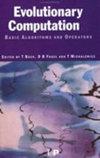精英进化算法的漂移分析与适合度分析
IF 3.4
2区 计算机科学
Q2 COMPUTER SCIENCE, ARTIFICIAL INTELLIGENCE
引用次数: 0
摘要
适应度方法是分析精英进化算法命中时间的常用工具。其原理是将搜索空间划分为多个适合度等级,并利用适合度等级之间的过渡概率估算出命中时间的下限和上限。然而,这种方法产生的下限往往比较宽松。关于适合度方法的一个悬而未决的问题是,根据适合度之间的过渡概率,可以构建出最严格的时间下限和上限。为了回答这个问题,我们将漂移分析与适应度水平相结合,并将最严格约束问题定义为受限于适应度水平的多目标优化问题。我们首次构建并证明了适应度水平的最严格度量边界。然后,从度量约束推导出线性约束,并建立了一个框架,可用于为不同类型的线性约束开发不同的适度水平方法。该框架具有通用性和广阔前景,因为它既可以用于绘制有捷径的适度景观,也可以用于绘制无捷径的适度景观。(1+1) EA 最大化 TwoMax1 函数的例子就证明了这一点。本文章由计算机程序翻译,如有差异,请以英文原文为准。
Drift Analysis with Fitness Levels for Elitist Evolutionary Algorithms
The fitness level method is a popular tool for analyzing the hitting time of elitist evolutionary algorithms. Its idea is to divide the search space into multiple fitness levels and estimate lower and upper bounds on the hitting time using transition probabilities between fitness levels. However, the lower bound generated by this method is often loose. An open question regarding the fitness level method is what are the tightest lower and upper time bounds that can be constructed based on transition probabilities between fitness levels. To answer this question, we combine drift analysis with fitness levels and define the tightest bound problem as a constrained multiobjective optimization problem subject to fitness levels. The tightest metric bounds by fitness levels are constructed and proven for the first time. Then linear bounds are derived from metric bounds and a framework is established that can be used to develop different fitness level methods for different types of linear bounds. The framework is generic and promising, as it can be used to draw tight time bounds on both fitness landscapes with and without shortcuts. This is demonstrated in the example of the (1+1) EA maximizing the TwoMax1 function.
求助全文
通过发布文献求助,成功后即可免费获取论文全文。
去求助
来源期刊

Evolutionary Computation
工程技术-计算机:理论方法
CiteScore
6.40
自引率
1.50%
发文量
20
审稿时长
3 months
期刊介绍:
Evolutionary Computation is a leading journal in its field. It provides an international forum for facilitating and enhancing the exchange of information among researchers involved in both the theoretical and practical aspects of computational systems drawing their inspiration from nature, with particular emphasis on evolutionary models of computation such as genetic algorithms, evolutionary strategies, classifier systems, evolutionary programming, and genetic programming. It welcomes articles from related fields such as swarm intelligence (e.g. Ant Colony Optimization and Particle Swarm Optimization), and other nature-inspired computation paradigms (e.g. Artificial Immune Systems). As well as publishing articles describing theoretical and/or experimental work, the journal also welcomes application-focused papers describing breakthrough results in an application domain or methodological papers where the specificities of the real-world problem led to significant algorithmic improvements that could possibly be generalized to other areas.
 求助内容:
求助内容: 应助结果提醒方式:
应助结果提醒方式:


